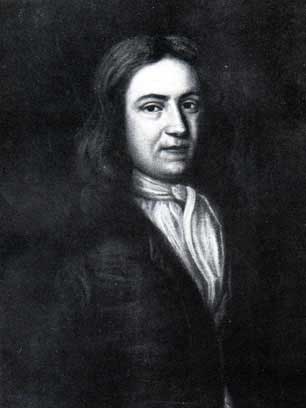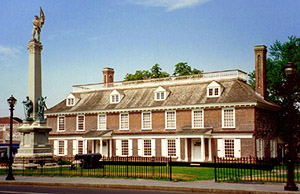Adolph Philipse on:
[Wikipedia]
[Google]
[Amazon]
 Adolphus Philipse (1665–1750) was a wealthy landowner of Dutch descent in the
Adolphus Philipse (1665–1750) was a wealthy landowner of Dutch descent in the
"Adolph Philipse having thus acquired the title from the original owners, proceeded at once to take the necessary steps for obtaining a patent for his lands, and presented a petition to Benjamin Fletcher, who was then governor of the Province of New York, which was granted June 17, 1697." Spanning from the Hudson River to the then
/ref> During the
 In 1697 Philipse purchased a tract of land from Dutch traders Lambert Dortlandt and Jan Sybrandt, who had bought it a few years before from several Wiccopee chiefs.Putnam County Historical Societ
In 1697 Philipse purchased a tract of land from Dutch traders Lambert Dortlandt and Jan Sybrandt, who had bought it a few years before from several Wiccopee chiefs.Putnam County Historical Societ
Adolphus Philipse profile This became known as the Highland Patent, and extended approximately 13 miles along the east shore of the Hudson River, from Annsville Creek to the Fishkill Creek, Fish Kill, and eastward some 20 or so miles to the border of the Colony of Connecticut, including Pollopel Island in the Hudson.Smith, Philip Henry, ''General History of Putnam County: From 1609 to 1876, inclusive'', published by the author, Pawling, NY, 1877, p. 44 Shortly after purchasing it, Philipse, whose residence was the Philipse Manor Hall near Tarrytown, and who maintained only a bachelor shooting lodge on Lake Mahopac in the Highland Patent, opened the tract to tenant settlers. Thus began a policy that lasted throughout his lifetime and his heirs' so long as they owned the land, to rent rather than sell, a practice which led to stunted growth for two and a half centuries to come. After Philipse's death in 1750 (Smith, 1749), the Highland Patent was inherited by his nephew, Frederick Philipse II, his only heir-at-law, who became the second Lord of the Manor at Philipsborough in Westchester County.
 Adolphus Philipse was the second son of Frederick Philipse, the first lord of Philipsburg Manor, and Margaret Hardenbroeck. He was a younger brother of Philip Philipse.Philipse Manor Hall State Historic Site website
Adolphus Philipse was the second son of Frederick Philipse, the first lord of Philipsburg Manor, and Margaret Hardenbroeck. He was a younger brother of Philip Philipse.Philipse Manor Hall State Historic Site website
Philip Philipse, oldest son of Frederick Philipse I, and his wife, Mary, both died in Barbados in 1689 (on September 14 and October 18, respectively). Their death notices, signed by the rector of nearby St. James Church, list cause of death as "belly ake", aka dysentery, a frequent cause of death during that time period on the island.
Putnam's Past
Boundary Changes of Putnam County
{{DEFAULTSORT:Philipse, Frederick 1665 births 1750 deaths American members of the Dutch Reformed Church American people of Dutch descent Interlopers (business) Members of the New York General Assembly People from colonial New York Adolphus Speakers of the New York General Assembly Members of the New York Executive Council 18th-century American slave traders 18th-century American landowners
 Adolphus Philipse (1665–1750) was a wealthy landowner of Dutch descent in the
Adolphus Philipse (1665–1750) was a wealthy landowner of Dutch descent in the Province of New York
The Province of New York was a British proprietary colony and later a royal colony on the northeast coast of North America from 1664 to 1783. It extended from Long Island on the Atlantic, up the Hudson River and Mohawk River valleys to ...
. In 1697 he purchased a large tract of land along the east bank of the Hudson River stretching all the way to the east to the Connecticut border.
Then known as the "Highland Patent" it became in time referred to as the Philipse Patent. After his death the Patent was inherited by his nephew, Frederick Philipse II, his only heir-at-law, who became the second Lord of the Manor of Philipsborough in Westchester County.
Early life
Adolphus Philipse was born in 1665, the second son of Frederick Philipse, the first Lord of the Manor of Philipsborough, a Dutch immigrant to North America ofBohemia
Bohemia ( ; ; ) is the westernmost and largest historical region of the Czech Republic. In a narrow, geographic sense, it roughly encompasses the territories of present-day Czechia that fall within the Elbe River's drainage basin, but historic ...
n heritage who had risen to become one of the greatest landholders in the New Netherlands.
Career
In 1697, Philipse purchased a tract of land which ran along the northern Westchester County border, which received Royal sanction as the "Highland Patent", later known as the Philipse Patent.''Historical and Genealogical Record Dutchess and Putnam Counties New York'', Press of the A. V. Haight Co., Poughkeepsie, New York, 1912; pp. 62-7"Adolph Philipse having thus acquired the title from the original owners, proceeded at once to take the necessary steps for obtaining a patent for his lands, and presented a petition to Benjamin Fletcher, who was then governor of the Province of New York, which was granted June 17, 1697." Spanning from the Hudson River to the then
Connecticut Colony
The Connecticut Colony, originally known as the Connecticut River Colony, was an English colony in New England which later became the state of Connecticut. It was organized on March 3, 1636, as a settlement for a Puritans, Puritan congregation o ...
it encompassed some 250 square miles.
Philipse' elder brother Philip
Philip, also Phillip, is a male name derived from the Macedonian Old Koine language, Greek (''Philippos'', lit. "horse-loving" or "fond of horses"), from a compound of (''philos'', "dear", "loved", "loving") and (''hippos'', "horse"). Prominen ...
, heir to the manor and title, died in 1699.
Upon Frederick's death in 1702, Adolphus received all the Manor north of Dobb's Ferry, including the present town. He was also named proprietor of a tract of land on the west bank of the Hudson north of Anthony's Nose and executor of Philip's estate. The balance of the Manor, the hereditary title, and family commercial holdings were bequeathed to his nephew, Frederick Philipse II.
After the bachelor Adolphus' death in 1749 (Smith, others 1750), his Manor holdings and the Highland Patent passed to Frederick II, his only heir-at-law, who became the second Lord of the Manor at Philipsborough.Philipse family history: At the death of Frederick Philipse in 1751, the Highland Patent was inherited by his son, Philip Philipse, and three daughters, Susannah (wife of Beverley Robinson), Mary (late wife of Col. Roger Morris), and Margaret, who died intestate. Margaret's portion was, by terms of her father's will, equally divided among her brother and sisters, and in 1751, after a survey of the whole tract, it was geographically divided into nine Lots; three on the river; three in the interior; three on the eastern (Connecticut) border. Each of the three heirs inherited a lot in each division.Pelletreau, William, S, ''History of Putnam County, New York – With Biographical Sketches of its Prominent Men'', W.W. Preston & Company, Philadelphia, 188/ref> During the
American Revolution
The American Revolution (1765–1783) was a colonial rebellion and war of independence in which the Thirteen Colonies broke from British America, British rule to form the United States of America. The revolution culminated in the American ...
the Philipse Patent lands were confiscated by the Provisional New York government's Commissioners of Forfeiture. Sold afterwards, they became today's Putnam County.
Philipse Patent
Adolphus Philipse profile This became known as the Highland Patent, and extended approximately 13 miles along the east shore of the Hudson River, from Annsville Creek to the Fishkill Creek, Fish Kill, and eastward some 20 or so miles to the border of the Colony of Connecticut, including Pollopel Island in the Hudson.Smith, Philip Henry, ''General History of Putnam County: From 1609 to 1876, inclusive'', published by the author, Pawling, NY, 1877, p. 44 Shortly after purchasing it, Philipse, whose residence was the Philipse Manor Hall near Tarrytown, and who maintained only a bachelor shooting lodge on Lake Mahopac in the Highland Patent, opened the tract to tenant settlers. Thus began a policy that lasted throughout his lifetime and his heirs' so long as they owned the land, to rent rather than sell, a practice which led to stunted growth for two and a half centuries to come. After Philipse's death in 1750 (Smith, 1749), the Highland Patent was inherited by his nephew, Frederick Philipse II, his only heir-at-law, who became the second Lord of the Manor at Philipsborough in Westchester County.
Family
 Adolphus Philipse was the second son of Frederick Philipse, the first lord of Philipsburg Manor, and Margaret Hardenbroeck. He was a younger brother of Philip Philipse.Philipse Manor Hall State Historic Site website
Adolphus Philipse was the second son of Frederick Philipse, the first lord of Philipsburg Manor, and Margaret Hardenbroeck. He was a younger brother of Philip Philipse.Philipse Manor Hall State Historic Site websitePhilip Philipse, oldest son of Frederick Philipse I, and his wife, Mary, both died in Barbados in 1689 (on September 14 and October 18, respectively). Their death notices, signed by the rector of nearby St. James Church, list cause of death as "belly ake", aka dysentery, a frequent cause of death during that time period on the island.
See also
* Philipse Patent * Frederick Philipse * Frederick Philipse II * Dutchess County, New York#The Patents, Dutchess County Land Patents * The OblongReferences
External links
Putnam's Past
Boundary Changes of Putnam County
{{DEFAULTSORT:Philipse, Frederick 1665 births 1750 deaths American members of the Dutch Reformed Church American people of Dutch descent Interlopers (business) Members of the New York General Assembly People from colonial New York Adolphus Speakers of the New York General Assembly Members of the New York Executive Council 18th-century American slave traders 18th-century American landowners